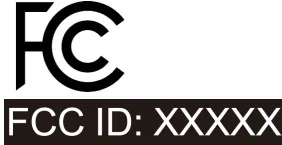
What is FCC Class A vs. Class B?
fcc compliance Guide: Class A vs. Class B Devices and Related Requirements
By law, all electronic devices that may intentionally or unintentionally emit radio frequency (RF) signals must comply with the regULations of the FCC (Federal Communications Commission).
Overview of fcc part 15 Regulations
The testing standards for most electronic or digital devices come from Part 15 of the Code of Federal Regulations (CFR), which governs both intentional and unintentional RF/radiation-emitting devices. The FCC compliance process varies depending on the device classification and the level of compliance requiRED—either Certification or a Supplier’s Declaration of Conformity (sdoc).

Differences Between FCC Class A and Class B Devices
What is a Class A Device?
Class A devices are designed specifically for commercial or industrial use and are not intended for general consumers.
- Looser emission limits, allowing for higher RF interference
- Must carry a label or display indicating "For Industrial/Commercial Use Only" or clearly state Class A status
- Not suitable for residential environments to avoid interference with consumer electronics
What is a Class B Device?
Class B devices are intended for use by the general public in residential environments, such as home electronics.
- Stricter emission limits to prevent interference with household devices like TVs and radios
- Includes most consumer devices with integrated circuits, clocks, oscillators, etc.
- Must carry a label indicating Class B classification
FCC Compliance testing and Requirements
SDoC (Supplier’s Declaration of Conformity)
Manufacturers must demonstrate that their products meet the strict standards under Subpart B of FCC Part 15. This typically involves testing by an accredited compliance laboratory.
Examples of Devices Requiring SDoC or Certification:
- Class B personal computers and internal components like power supplies and CPU boards
- Class B digital devices and their peripherals
- Broadband over power line (BPL) access equipment
- Class A digital devices, external power supplies, and peripherals
Radiated Emissions Testing (emi testing)
Radiated emissions testing measures the electromagnetic field strength unintentionally emitted by a device to determine if it complies with FCC emission limits.
- Non-compliant devices may interfere with the operation of other electronics
- If a device fails the test, root cause analysis and design modifications must be carried out before retesting
> For more on emi testing, refer to our training course: “The Ultimate Guide to EMI in Electronic Products”
Compliance Testing Consultation and Support
Ensuring your product complies with FCC regulations before market launch is critical. Non-compliant devices risk fines, legal liability, or prohibition from being sold.
As experts in FCC and international compliance testing, we can assist you with:
- Device testing
- Navigating the fcc certification process
- Ensuring full product compliance
Let me know if you'd like this adapted into a formal document or presentation format too.
Email:hello@jjrlab.com
Write your message here and send it to us
 What Are the Testing Items of California Propositi
What Are the Testing Items of California Propositi
 E-Cigarette EU TPD Testing
E-Cigarette EU TPD Testing
 Testing Certification for E-cigarettes Exported to
Testing Certification for E-cigarettes Exported to
 What is Amazon US CPC Certification?
What is Amazon US CPC Certification?
 UK Toy Safety Regulation Standard EN 71-13
UK Toy Safety Regulation Standard EN 71-13
 What is EU UFI Registration?
What is EU UFI Registration?
 EU UFI Registration for E-cigarette E-liquid
EU UFI Registration for E-cigarette E-liquid
 How to get the MSDS Report for Electronic Cigarett
How to get the MSDS Report for Electronic Cigarett
Leave us a message
24-hour online customer service at any time to respond, so that you worry!




